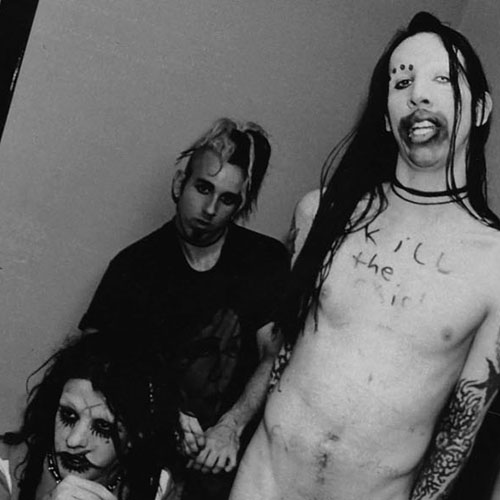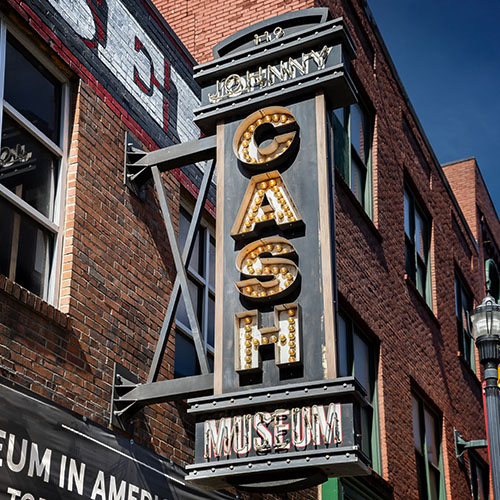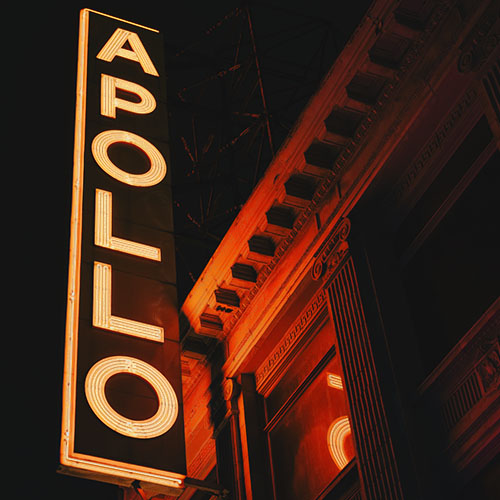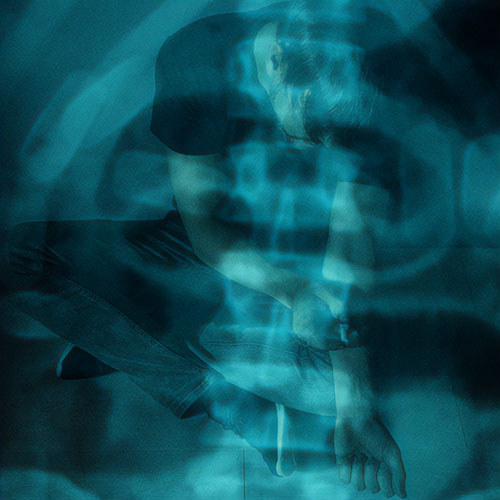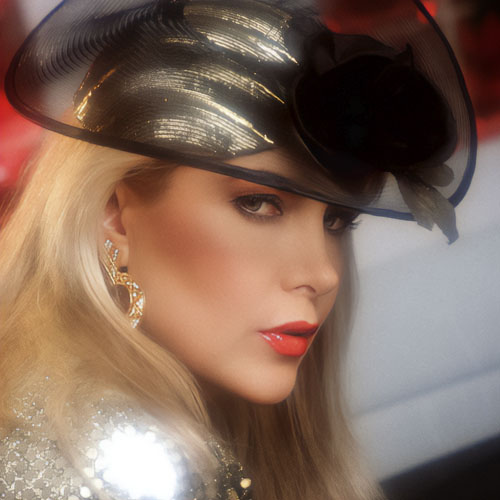The icy mountain path ahead of me curves sharply to the left. Well before I get there, I crouch slightly and lean hard to one side, holding on tight with mittened hands.
Snow Days with a Dogsled
The wintry trail is fairytale material. Glimpses of blue sky are visible through the snow-covered arms of towering pine trees that stand at attention to either side. But danger lurks: tree branches poised to impale innocent passersby; icy patches ready to send trespassers flying off the path; and beyond the pine guard, a cold, steep drop deep into the valley below. I have put my life in the hands — or paws, rather — of Nanuk, Ronja, and Heidi, three Alaskan huskies with the muscled bodies and long tails of their wolf ancestors. They are hurtling forward, dragging me — and the sled on which I’m standing — along in their wake.
It is the first afternoon of dogsledding school at the Waldschrat Adventure Company, deep in the hills of Germany’s Bavarian Forest. My only lesson so far has been a ten-minute social with a pack of barking dogs, and a chilly hour of introduction to the sleds, spoken in dense Bavarian dialect, in the barn that morning. I’m quick to realize that this is going to be on-the-job training — learning through trial and error.
Thomas Gut, 40, is the maverick boss of the one-man, 53-dog operation that is the Waldschrat Adventure Company. Gut has spent his whole life in Bavaria, a state often compared to Texas for its conservative views and regional pride, but he would fit in better in Berkeley, California. A braided leather band tied around his forehead does little to control his black shoulder-length hair. Around his ears the hair joins a bushy beard, making him furrier than some of his dogs. Around his neck is a bear claw on a leather thong, a present given to him by a Siberian native after a race there in 1994. Even with temperatures well below freezing — I’m shivering in my down jacket and three pairs of socks — Gut goes barefoot. He believes it’s good for him.
“The dogs are 20,000 years away from their wolf ancestors, but n their social systems they are still wolves.”
A self-styled frontiersman, Gut looks forward to the day he can install solar panels in his old farmhouse, which will make him, he says, completely independent from society. But his roots are laid bare by his lilting accent, by dishes and silverware that carry the blue-and-white state seal, and by the old Bavarian names — BIasius, Mertl, Vinzenz — he gives to his dogs.
Gut claims that he has never had a mishap in 11 years of teaching people to dogsled. But as I round slippery curve after slippery curve, I wonder if I can believe this from a man who, earlier in life, designed crash pads for automobiles. He bought his first dogs as a team, in 1987, and spent a year living with them in the house. It was around this time that he renounced the material world and started the Waldschrat Adventure Company as a way to support his dog habit.
Gut taught himself to sled, or “mush,” through trial and error. He practiced in the summer on a dirt road with a wheeled cart (roughly a cross between a walker and a Roman chariot), the standard summer-training technique for dogsledders. He ran his first dogsled race in 1990 in the Alps. He earned his first victory in Czechoslovakia in 1992, and returned the following year for another first-place win. He later had second- and fourth-place finishes in a Siberian and an Italian race.
To have a fast team you have to pick the dogs for speed. Gut breeds his own, and takes a rather New Age approach to the whole business. He says he is more interested in the team itself than in the racing ability of its members. “For me,” he says, “it is more important to work with the dogs — I’m not so concentrated on racing. I want to go with my dogs. I am happy when they give what they can.”
Waldschrat Adventure Company offers mushing courses ranging from two days to a week, October to May. (Waldschrat also offers courses like winter survival, kayaking, and snowshoeing.) Most of the 70 or so people who come to experience the wonders of dog-sledding each season are tourists looking for an adventure. But it’s hard to imagine the stereotypical beer-quaffing, sun-worshipping German tourist enjoying the rigors of Waldschrat — sharing an unheated bunk with strangers and slopping food to the dogs am among the scheduled activities — and so one figures that the participants are somewhat self-selecting. A few people have even taken Gut’s lessons to heart, and he now counts a few regular sledders — and sled racers — among his alumni.
“I want to go with my dogs,” says Thomas Gut. “I am happy when they give what they can.”
Despite abundant snow, dogsledding was virtually unknown in Germany until 1981, when it became an official sport. The Association of German Dogsledders (Arbeitsgemeinschaft Schlittenhund Deutschland) has around 1,600 members; it is working to make mushing an Olympic sport.
Gut’s dogs are Alaskan huskies, which means by German breeding standards that they are at least 50 percent Siberian husky. In Germany they are ineligible to run in purebreed races. Thanks to their mixed blood, their looks are rather heterogeneous. Most of them are less furry and more obviously muscled than a stereotypical sled dog, owing in part to their rigorous exercise program and carefully controlled diet. Two big chicken-wire pens take up most of the yard on Gut’s compound. Males live in one cage, females in the other. “Without it, we would have a baby boom here,” Gut jests. A smaller cage near the barn houses the whelps who will start training in the spring.
Each dog is chained by its collar to the thick wires that run across the top of the pens. Just long enough to let the animal run in a small circle around his wooden house, the chains are designed to prevent dog fights, which can be deadly. The penitentiary look is ugly, Gut admits, but he says the dogs’ wild instincts require it: “They are 20,000 years away from wolves, but in their heads, especially in their social systems, they still are [wolves]. “
The dogs are phenomenally well-trained, and respond to the mere presence of their master. When the ringing of church bells sets them howling, as happens several times a day, Gut steps into view and they stop. Twice a day they are fed a pungent warm soup of ground salmon and beef. As a group, the dogs go through 66 pounds of fish and meat every day, and visitors are encouraged to help serve it from heavy, sloshing buckets. Gut uses an industrial grinder to mix the meat, then boils it for 45 minutes, filling the barn’s backroom with fish-scented steam. Dry food would be easier, sure, but when Gut tried it, the stuff increased the dogs’ waste matter 20 percent. “Expensive money for a lot of shit” is how he puts it. As it is, he shovels about ten pounds of the stuff a day. At night the dogs get a second course of the mixture, sometimes cut with a little rice or potatoes. Hauled around in a wheelbarrow, the mash is doled out according to how much Gut thinks an individual dog needs.
The real ruckus begins not at feeding times, but when Gut pulls his truck out of the barn. At precisely the same moment, all 53 dogs start to run in frantic circles, barking and howling at the top of their lungs. The dogs are convinced that getting noticed is the key to being picked to run. Actually, Gut has figured out the teams ahead of time: a leader and two other dogs for each of us, a leader and four for himself. The choices are based on factors like which dogs work well together, and which ones need exercise that day. Lead dogs are not picked; they are born that way, says Gut.
Gut brings out the chosen, one by one. He sets the males free, and they spin around in the yard, leaving their mark on fences, clumps of grass, and frozen puddles. The females are more vicious: They have to be held by their collars and walked on their hind legs, teeth bared, past their pen mates. “A lot of females in one place is trouble, especially when there are men around,” Gut says.
After the dogs are loaded aboard, I squeeze into the cab of Gut’s truck, which smells from its canine cargo. Gut drives the very same way he has instructed us to sled, leaning to the side as he accelerates into the curves, the effect magnified in his bouncing truck. He parks at the base of an icy hiking trail, pulls a long rope from the bottom of the truck, and attaches it to the bumper. In their kennels, the dogs begin whining with excitement. Gut climbs on top of the truck, hands us the sleds, and we attach them to the rope. We release the canines one by one, starting with the lead dogs.
The dogsled lead is Nanuk, a handsome male with a woolly white coat. Nanuk helps me put on his harness, bending his head and lifting his paws. I attach him to the sled and hook the neckline to his collar. The neckline will keep him connected to Ronja, a wolfy female with a gray back, who should stand to Nanuk’s left. But when I come back from retrieving Heidi, a wiry dog with ears that stick out like a gremlin’s, Nanuk and Ronja are both straining, pulling their neck lines in opposite directions. So much for born leaders.
Once the other teams are lined up, however, and Gut has taken his place at the front of the line, the dogs stand at excited attention, furry bundles of kinetic energy. Steam from their breath rises in great clouds over their heads.
“Feeding the dogs is time consuming and expensive; they go through 66 pounds of fish and meat every day.”
Finally, just when I think that the anchor line can’t hold up for another minute under the straining, there is enough room between my team and the sled ahead for me to yank the rope that sets us free. I expect us to take off terrifyingly fast, but the trail begins on an icy uphill, and I have to help the dogs up, pushing behind with one foot like a skateboarder.
Light and flexible, and about the size of a child’s toboggan, the sleds are designed for maximum speed, which means they are not designed for stability or security. Each sled has a waist-high wooden handle that I grip tightly, and metal runners barely wide enough to support my booted feet. There are also anchors-heavy two-pronged forks — that can be used to immobilize the sled mid-trail. A good kick should ground it, as long as the snow is deep enough. Gut recommends wrapping an anchor around the trunk of a small tree if the ground is too hard. Though the sled is equipped with a brake, it’s pretty useless if the dogs don’t feel like stopping.
While the dogsled propels forward, it is up to the musher to keep it in the right place on the trail by bending at the knees and shifting the weight from side to side. Gut teaches verbal commands — “whoa” for stop, “gee” for right, “haw” for left — before unleashing his charges into the wild, but as the dogs and I cruise through the snow, I have a hard time remembering which is which.
What I am able to recall is something Gut had said earlier, in passing. “You are the last dog in the team! You are the wheel dog!” he had shouted, reminding us humans of our place in the chain. “It’s one team, not two!” And he is right. Once we find our rhythm, the ride is nothing short of spectacular. The cold air seems warmer after the hill, and it smells of the pines that line both sides of the trail. The dogs run in unison, tails low and lupine and their heads bent forward. Their feet make crunching noises in the snow, the only sound except for the sh-sh-sh of the sled following in their path. I practice shifting my weight and braking. Twice we pass trucks doing maintenance work on the path; I am amazed when the dogs don’t even stop to sniff.
It is not always as easy as it looks, though. When my sled hits a bump in the path, I jump from it to keep from flying off. Suddenly the dogs are heading downhill — without me! “Whoa! Whoa!” I shout, wondering if they realize I’m gone. The dogs can’t understand the command to stop without feeling the brake, and they ignore me. But I finally jump onto the brake, they slow down, and everything is working again.
“It’s not always as easy and it looks. When my sled hits a bump in the path, I jump from it keep from flying off.”
Back at the top of the hill where we started, Gut stops the caravan and helps us put chains around the bottoms of our sleds, to keep us from flying down. Safely at the bottom, we reattach the sleds to the lines. Gut tosses chunks of raw salmon to the dogs, who gulp it down without chewing. After giving each a bowl of their warm soup, we escort them back to their cages.
But can you really teach people a sport that is often more about intuition than skill? Barbara Nebauer, president of the Association of German Dogsledders, doesn’t think so. “Either you can do it, or you can’t,” she says. “Dogs are like people — each one is different.” Just because Gut gives out a “Mushing Diploma” to prove that people have completed the course, she says, does not mean that they know how to sled. Nebauer, who herself possesses two Siberian huskies, likens letting a near-stranger race your dogs to letting a near-stranger borrow your children: “I don’t give my kids away either.”
Instinct or not, by the second day, higher in the mountains this time, with more snow and less ice, I can already feel the difference. The dogs are responding better to me, and I to them. I am actually brave enough not to brake on some of the downhill runs. And that, says Gut, is what it’s all about: “The more you work with the dogs, the more you trust them, and the more they trust you. That’s mushing.”
For additional information on planning your own dogsledding adventure, we can help. Now it might help if you can speak German for this particular adventure, so we looked up some other options for the less culturally-advanced. Turns out there happens to be an entire “Sled Dog Central” directory for all things dogsled in the United States. We’d start there if it sounded interesting. Full disclosure, we are almost all devout Southern California people in this department, so we don’t actually DO snow. It looks really cold, and our flip flops would get all gummed up with ice. Bleh.

















